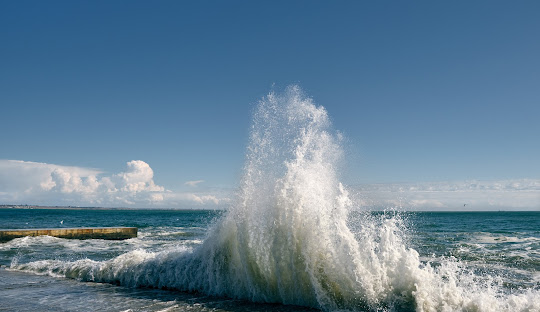Odessa, Ukraine
🌊 Odessa, Ukraine: The Pearl of the Black Sea
Perched on the shores of the Black Sea, Odessa is Ukraine’s vibrant coastal jewel—a city that fuses imperial elegance, sandy beaches, and a bohemian soul. With its sun-drenched promenades, whimsical courtyards, and lively street life, Odessa stands as a cultural crossroads between Europe and the East.
🏛️ A Stroll Through History: The Heart of Odessa
Founded in the late 18th century by Catherine the Great, Odessa was designed to impress—and it still does.
-
Begin at Primorsky Boulevard, a leafy promenade flanked by grand 19th-century mansions and sea views.
-
The iconic Potemkin Stairs, immortalized in Sergei Eisenstein’s 1925 film Battleship Potemkin, descend dramatically toward the port.
-
The Odessa Opera and Ballet Theater, a Baroque Revival masterpiece, offers world-class performances in opulent surroundings.
You’ll feel echoes of Odessa’s imperial past in every architectural detail.
🎭 Art, Humor, and Underground Culture
Odessa has long been the cultural capital of southern Ukraine, famous for its wit and creativity.
-
Visit the Odessa Museum of Western and Eastern Art, home to works by Caravaggio and Rubens.
-
Discover the quirky Literature Museum, highlighting Odessa’s role in Russian and Ukrainian literary history.
-
The city is also known for its distinct sense of humor, celebrated annually on April Fool’s Day during the “Humorina” festival.
Art and comedy thrive in Odessa's rebellious and expressive spirit.
🏖️ Black Sea Beaches & Coastal Bliss
Odessa’s beaches are its summertime pride, perfect for sunbathers and swimmers.
-
Lanzheron Beach: Family-friendly with sunbeds, cafes, and a dolphinarium.
-
Arcadia Beach: The most famous, a mix of daytime sunbathing and nighttime clubbing.
-
Otrada Beach: A quieter escape accessible by a charming funicular ride.
In summer, the coast transforms into a Mediterranean-style resort scene—lively, carefree, and full of music.
🕳️ Odessa Catacombs: A Hidden World Beneath
Beneath Odessa lies one of the world’s largest catacomb networks, stretching over 2,500 kilometers.
-
Originally limestone quarries, they became wartime hideouts and smuggler routes.
-
Visit the Catacombs Museum in Nerubayske for a safe and guided descent.
-
These tunnels reflect the city's layered and shadowy history, from resistance fighters to Cold War secrets.
A tour here is equal parts eerie and fascinating.
🍽️ Taste of Odessa: Seaside and Slavic Flavors
Odessa’s culinary scene combines Eastern European staples with fresh Black Sea produce.
-
Forshmak: Herring pâté with apples and onions—a Jewish-Odessan favorite.
-
Deruny: Crispy potato pancakes served with sour cream.
-
Black Sea mussels and fried goby fish are local coastal specialties.
-
Wash it down with horilka (Ukrainian vodka) or Odessa wine.
Top restaurants include Dacha, a retro-Soviet summer house turned eatery, and Kumanets, a folk-themed dining experience.
🏨 Where to Stay in Odessa
-
Luxury: Bristol Hotel—historic opulence with modern amenities.
-
Mid-range: Mozart Hotel—chic and central, near the opera house.
-
Budget: Friday Hostel—stylish and social, ideal for young travelers.
Most accommodations are walking distance from the city center and beach.
🌅 Top Attractions Not to Miss
-
City Garden: Odessa’s oldest public park with fountains and classical music in the air.
-
Passage: An elegant 19th-century shopping arcade with glass ceilings and sculptures.
-
Mother-in-Law Bridge: A narrow, romantic bridge with love locks and sweeping views.
-
Vorontsov Palace: A clifftop mansion with Italianate arches and sea breezes.
Each site adds a layer to Odessa’s romantic and rebellious character.
📅 Travel Tips for Odessa
-
Best time to visit: Late May to early September for beach season; spring and fall for mild weather and fewer crowds.
-
Language: Ukrainian is official; Russian widely spoken; English in tourist areas.
-
Currency: Ukrainian Hryvnia (UAH).
-
Safety: Stay informed about regional travel advisories. Odessa itself remains generally safe, especially in the city center.
Always book guided tours for the catacombs and stick to lit, busy areas at night.
📸 Most Instagrammable Spots
-
Potemkin Stairs at sunrise
-
Odessa Opera House lit at night
-
Arcadia Beach from a drone’s view
-
Catacomb entrances in Nerubayske
-
Quirky graffiti in the City Garden
Odessa is a visual feast for every traveler with a camera and a sense of curiosity.


